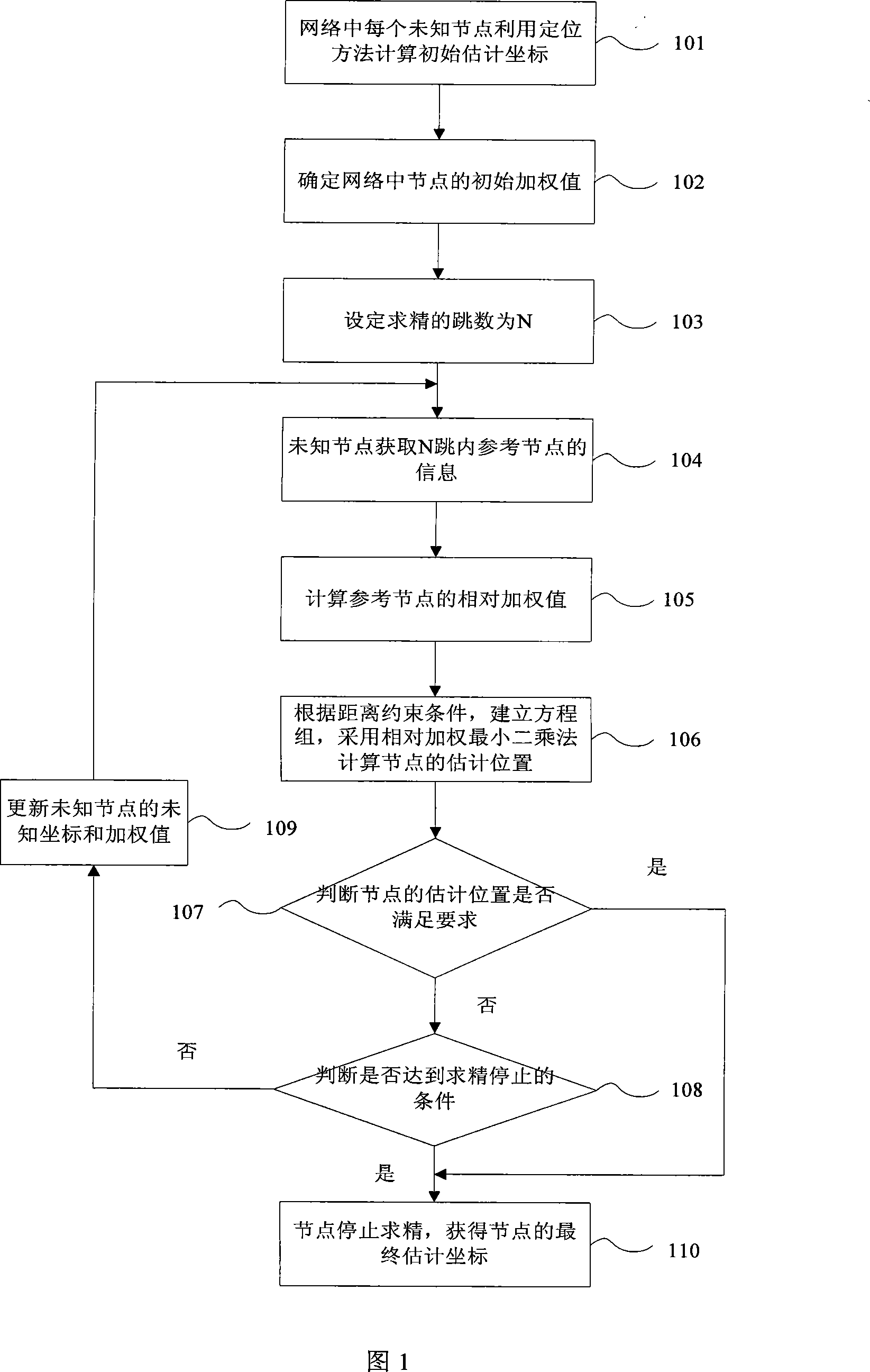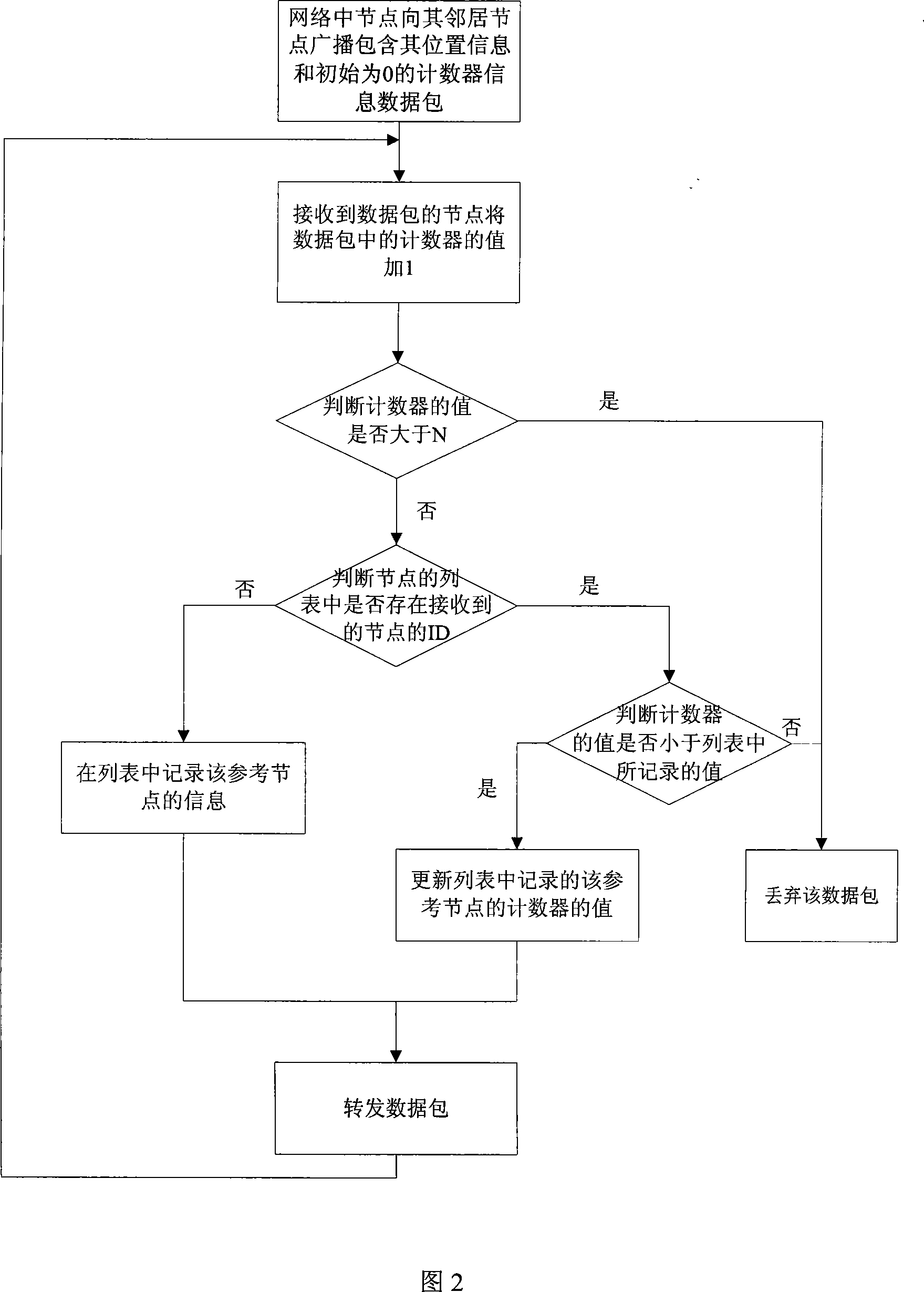Wireless sensor network location refining method based on hop count
A wireless sensor and network positioning technology, applied in positioning, radio wave measurement systems, instruments, etc., can solve problems such as error accumulation, insufficient number of anchor nodes, positioning measurement errors, etc., to reduce positioning errors, improve coverage, and avoid Effects of Insufficient Reference Nodes
- Summary
- Abstract
- Description
- Claims
- Application Information
AI Technical Summary
Benefits of technology
Problems solved by technology
Method used
Image
Examples
Embodiment Construction
[0047] The technical solutions of the present invention will be further described in detail below in conjunction with the drawings and specific embodiments.
[0048] The present invention is a wireless sensor network positioning refinement method based on the number of hops, please refer to Figure 1 and Figure 2, and the specific steps are as follows:
[0049] 101 in Figure 1: The unknown node in the network uses the positioning method to calculate the initial estimated position coordinates.
[0050] This step is the basis for the realization of the refinement method, and a distance-based or distance-independent positioning method can be used.
[0051] In wireless sensor networks, the distance-based positioning method refers to positioning by measuring the actual distance or position between adjacent nodes. According to the method used to measure the distance or position of the node, it can be divided into: TOA-based positioning, TDOA-based positioning, AOA-based positioning, and ...
PUM
 Login to View More
Login to View More Abstract
Description
Claims
Application Information
 Login to View More
Login to View More - R&D
- Intellectual Property
- Life Sciences
- Materials
- Tech Scout
- Unparalleled Data Quality
- Higher Quality Content
- 60% Fewer Hallucinations
Browse by: Latest US Patents, China's latest patents, Technical Efficacy Thesaurus, Application Domain, Technology Topic, Popular Technical Reports.
© 2025 PatSnap. All rights reserved.Legal|Privacy policy|Modern Slavery Act Transparency Statement|Sitemap|About US| Contact US: help@patsnap.com



